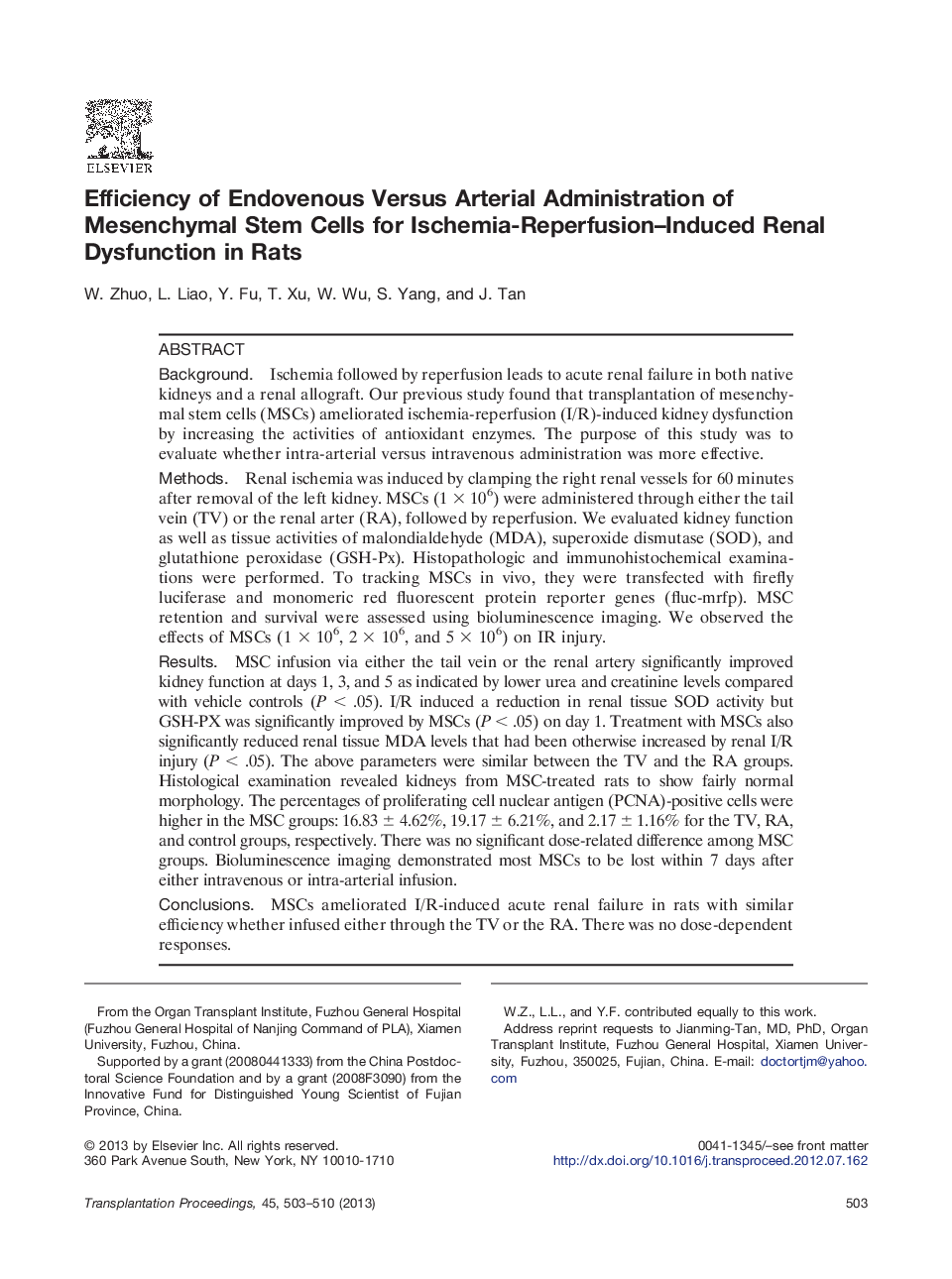| Article ID | Journal | Published Year | Pages | File Type |
|---|---|---|---|---|
| 4256132 | Transplantation Proceedings | 2013 | 8 Pages |
BackgroundIschemia followed by reperfusion leads to acute renal failure in both native kidneys and a renal allograft. Our previous study found that transplantation of mesenchymal stem cells (MSCs) ameliorated ischemia-reperfusion (I/R)-induced kidney dysfunction by increasing the activities of antioxidant enzymes. The purpose of this study was to evaluate whether intra-arterial versus intravenous administration was more effective.MethodsRenal ischemia was induced by clamping the right renal vessels for 60 minutes after removal of the left kidney. MSCs (1 × 106) were administered through either the tail vein (TV) or the renal arter (RA), followed by reperfusion. We evaluated kidney function as well as tissue activities of malondialdehyde (MDA), superoxide dismutase (SOD), and glutathione peroxidase (GSH-Px). Histopathologic and immunohistochemical examinations were performed. To tracking MSCs in vivo, they were transfected with firefly luciferase and monomeric red fluorescent protein reporter genes (fluc-mrfp). MSC retention and survival were assessed using bioluminescence imaging. We observed the effects of MSCs (1 × 106, 2 × 106, and 5 × 106) on IR injury.ResultsMSC infusion via either the tail vein or the renal artery significantly improved kidney function at days 1, 3, and 5 as indicated by lower urea and creatinine levels compared with vehicle controls (P < .05). I/R induced a reduction in renal tissue SOD activity but GSH-PX was significantly improved by MSCs (P < .05) on day 1. Treatment with MSCs also significantly reduced renal tissue MDA levels that had been otherwise increased by renal I/R injury (P < .05). The above parameters were similar between the TV and the RA groups. Histological examination revealed kidneys from MSC-treated rats to show fairly normal morphology. The percentages of proliferating cell nuclear antigen (PCNA)-positive cells were higher in the MSC groups: 16.83 ± 4.62%, 19.17 ± 6.21%, and 2.17 ± 1.16% for the TV, RA, and control groups, respectively. There was no significant dose-related difference among MSC groups. Bioluminescence imaging demonstrated most MSCs to be lost within 7 days after either intravenous or intra-arterial infusion.ConclusionsMSCs ameliorated I/R-induced acute renal failure in rats with similar efficiency whether infused either through the TV or the RA. There was no dose-dependent responses.
